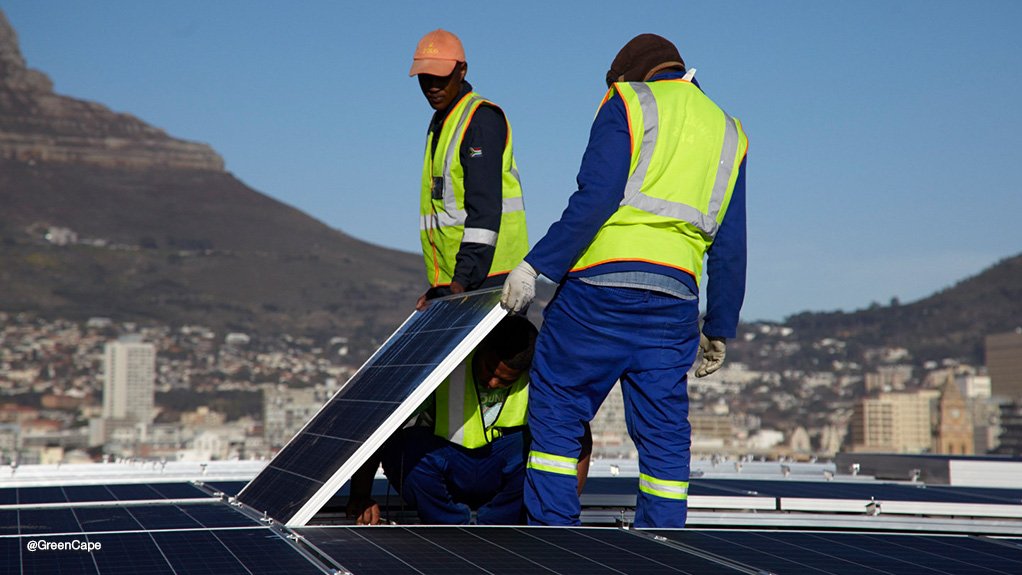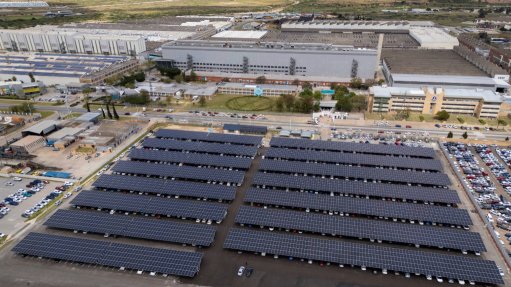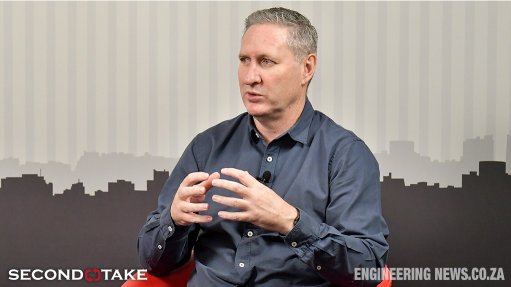Aligning energy transition with 1.5°C climate target will yield jobs windfall
An energy transition aligned with a 1.5°C-compatible climate pathway has net positive effects on job creation, a new report published by the International Renewable Energy Agency (Irena) states.
The full ‘World Energy Transitions Outlook’ document shows that under a scenario that limits the global average temperature increase to 1.5°C above preindustrial levels by the end of the century, jobs will exceed those created under a planned energy scenario, or PES, which reflects the current energy plans of governments.
“In the energy sector itself, the 1.5°C Scenario sees the number of jobs peaking by 2030 at 137-million, or 26-million more than the PES. By 2050, the sector supports 122-million jobs under the 1.5°C Scenario, still surpassing the PES by 8-million jobs,” the report, which was published this week, states.
Of the 137-million energy sector jobs by 2030, 107-million jobs are transition related, with energy efficiency-related jobs reaching above 45-million and renewables contributing about 39-million.
“As the transition progresses beyond 2030, the further decrease of fossil fuel jobs in the 1.5°C Scenario is more than compensated by gains in renewables, power grids and flexibility, and hydrogen jobs,” Irena states, adding that hydrogen jobs will remain stable at around 2-million from 2030 to 2050.
Under the 1.5°C Scenario, there will be 43-million jobs in renewable energy by 2050, almost double the number in the PES. In 2019, by contrast, there were 11.5-million jobs in the renewables sector, up from 7.3-million in 2012, and representing 20% of the 58-million energy jobs worldwide.
Construction, installation and manufacturing are seen boosting renewables jobs during the next decade, with operations and maintenance (O&M) jobs gaining relative weight as the transition advances.
By 2050, under the 1.5°C Scenario, the 43-million renewables jobs are distributed across the value chain with 33% in construction and installation, 26% in biofuel supply, 21% in O&M and 20% in manufacturing.
SOLAR JOBS
Solar photovoltaic (PV) is the single-largest source of jobs in renewables across both scenarios, followed by biomass.
A recently published ‘Solar PV Industry Jobs Report’ states that between 11 000 and 13 000 O&M jobs could be created in South Africa by 2030, alongside 40 000 full-time equivalent (FTE) jobs every year in the preparation, development and construction of domestic solar projects.
The report, which was produced by the Council for Scientific and Industrial Research (CSIR), defines FTE jobs as equal to one person working full time over the course of a year.
As with the Irena report, the South African report also confirms that the bulk of the initial jobs will be created in project construction, with O&M employment growing cumulatively as the installed base increases.
There is also potential, the CSIR report states, to create permanent jobs in the manufacturing of solar PV components should a consistent procurement policy be sustained.
The Irena report argues that the energy transition “brings immense opportunity for the development of local supply chains, creating value and jobs locally”.
ECONOMY-WIDE BENEFITS
Meanwhile, economy-wide employment under the 1.5°C Scenario will also be higher, with the employment benefits peaking before 2030 and representing a difference of 1.44%, or 51.3-million jobs, over the PES.
As the transition progresses beyond 2030, these differences in employment over the PES gradually reduce until they reach 0.55%, or 20.2-million jobs, by 2050.
One of the main positive impacts on employment comes from investment in the energy transition, including grid enhancement, efficiency and renewable energy, the report explains.
Irena calculates that $131-trillion will need to flow into the energy system over the period to 2050 to support a 1.5°C pathway, translating to an average yearly funding requirement of $4.4-trillion, or about 5% of global gross domestic product.
“Between now and 2050, over 80% of the $131-trillion total must be invested in energy-transition technologies, including efficiency, renewables, end-use electrification, power grids, flexibility, hydrogen, and innovations designed to help emerging and niche solutions become economically viable.”
Induced and indirect effects also have a positive impact on economy-wide employment throughout the transition period to 2050, but the trade effects are negative, driven by the change in trade in fossil fuels.
“Manufacturing sees a boost in jobs required to deploy the infrastructure and equipment for the transition. The differential is more than 13-million jobs by 2030, and by 2050 still runs to more than 9-million jobs.”
In its ‘Net Zero by 2050: A Roadmap for the Global Energy Sector’ report, published in May, the International Energy Agency (IEA) stated that the transition to net zero brings substantial new opportunities for employment, with 14-million jobs created by 2030.
The IEA cautions, however, that these job opportunities are often in different locations to those being lost as fossil fuels decline.
Comments
Press Office
Announcements
What's On
Subscribe to improve your user experience...
Option 1 (equivalent of R125 a month):
Receive a weekly copy of Creamer Media's Engineering News & Mining Weekly magazine
(print copy for those in South Africa and e-magazine for those outside of South Africa)
Receive daily email newsletters
Access to full search results
Access archive of magazine back copies
Access to Projects in Progress
Access to ONE Research Report of your choice in PDF format
Option 2 (equivalent of R375 a month):
All benefits from Option 1
PLUS
Access to Creamer Media's Research Channel Africa for ALL Research Reports, in PDF format, on various industrial and mining sectors
including Electricity; Water; Energy Transition; Hydrogen; Roads, Rail and Ports; Coal; Gold; Platinum; Battery Metals; etc.
Already a subscriber?
Forgotten your password?
Receive weekly copy of Creamer Media's Engineering News & Mining Weekly magazine (print copy for those in South Africa and e-magazine for those outside of South Africa)
➕
Recieve daily email newsletters
➕
Access to full search results
➕
Access archive of magazine back copies
➕
Access to Projects in Progress
➕
Access to ONE Research Report of your choice in PDF format
RESEARCH CHANNEL AFRICA
R4500 (equivalent of R375 a month)
SUBSCRIBEAll benefits from Option 1
➕
Access to Creamer Media's Research Channel Africa for ALL Research Reports on various industrial and mining sectors, in PDF format, including on:
Electricity
➕
Water
➕
Energy Transition
➕
Hydrogen
➕
Roads, Rail and Ports
➕
Coal
➕
Gold
➕
Platinum
➕
Battery Metals
➕
etc.
Receive all benefits from Option 1 or Option 2 delivered to numerous people at your company
➕
Multiple User names and Passwords for simultaneous log-ins
➕
Intranet integration access to all in your organisation





















